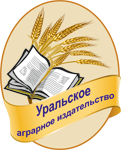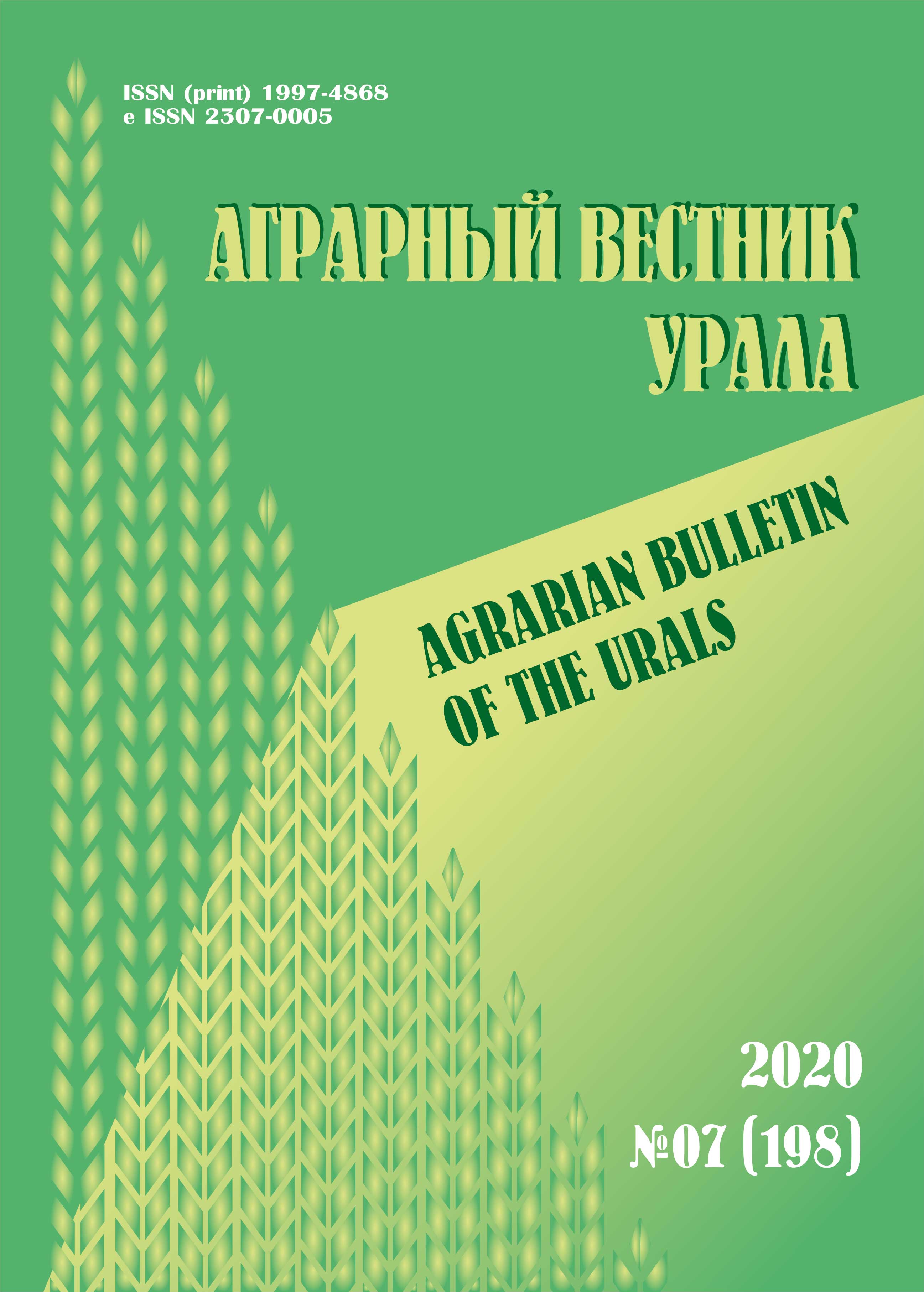Abstract. The purpose of the study is to establish the optimal and critical values of different chemisms and the degree of salinity and the corresponding indicators of osmotic pressure, pH of the medium for the germination energy and germination of seeds of alfalfa and sweet clover. Objectives of the study are to identify the parameters of 50 and 99 % death of seeds of the studied crops, taking into account the chemistry and degree of salinity, to determine the most toxic water-soluble salts in solonetzic soils and drill cuttings; to identify the degree of participation of osmotic pressure and pH of the medium for the studied options, to conduct a comparative study of chemisms and the degree of their salinity on the germination and germination of seeds of phytomeliorants. Methods. The experiments were carried out in laboratory conditions. Seeds of sweet clover of the Alsheevskiy variety and alfalfa of the Yaroslavna variety were used as the object of the study. The energy and germination of seeds were determined according to GOST 12038-84. Scientific novelty. For the first time, the parameters the average lethal dose and the dose is absolutely lethal for sweet clover and alfalfa seeds were established in relation to different salinity chemisms, represented by one easily soluble salt, identical to soil and technogenic salinization. The parameters of osmotic pressure and pH of the medium for the average lethal dose and the dose is absolutely lethal were determined for each salinity chemistry. Results. It was found that a low concentration of MgSO4 (up to 0.3 %) did not reduce the energy and germination of seeds of sweet clover and alfalfa. Sodium neutral salts (Na2SO4, NaCl) led to the loss of seed germination of sweet clover and alfalfa (the dose is absolutely lethal) at a salinity degree of 2.0–2.9 %, which corresponds to a high osmotic pressure of 8.9–13.9 atm. Sweet clover seeds had a higher capacity for maximum salinity. Under soda salinity (Na2CO3, NaHCO3), 50 % death of sweet clover and alfalfa seeds corresponded to salinity levels of solonetzes and drill cuttings of 0.09 and 0.25 %. The phenomenon corresponding to the dose is absolutely lethal was noted here, respectively, at the level of salinity of soils and drill cuttings of 0.42 and 0.95 %. It is important to take into account the average lethal dose indicator when recultivating solonetzes and drill cuttings in order to establish seeding rates and select phytomeliorant crops.
chemistry and degree of salinity, medium pH, osmotic pressure, germination energy, germination, alfalfa and sweet clover seeds
1. Skipin L. N., Fedotkin V. A. Rezul'tativnost' deystviya himicheskoy melioracii soloncov v usloviyah Zapadnoy Sibiri // Plodorodie pochv i ocenka produktivnosti zemledeliya: materialy nauchno-proizvodstvennoy konferencii s mezhdunarodnym uchastiem. Tyumen', 2018. S. 406-414. EDN: https://elibrary.ru/YRULWH
2. Skipin L. N., Skipin D. L., Petuhova V. S., Burlaenko V. Z. Vliyanie koagulyantov i omagnichennoy vody dlya rassoleniya burovyh shlamov // Estestvennye i tehnicheskie nauki. 2022. № 6 (169). S. 72-77. EDN: https://elibrary.ru/QSZNVA
3. Gaevaya E. V., Tarasova S. S., Skipin L. N., Zimnuhova A. E. Ekologicheskoe obosnovanie ispol'zovaniya tehnogennyh gruntov na osnove burovyh shlamov dlya rekul'tivacii narushennyh zemel' // Zaschita okruzhayuschey sredy v neftegazovom komplekse. 2022. № 2 (305). S. 23-30. DOI:https://doi.org/10.33285/2411-7013-2022-2(305)-23-30. EDN: https://elibrary.ru/SLESSR
4. Dobrotvorskaya N. I., Semendyaeva N. V. Innovacionnye podhody k ispol'zovaniyu soloncovyh agrolandshaftov Barabinskoy ravniny // Sibirskiy vestnik sel'skohozyaystvennoy nauki. 2018. T. 48. № 1. S. 10-19. DOI:https://doi.org/10.26898/0370-8799-2018-1-2. EDN: https://elibrary.ru/YUDUSE
5. Semendyaeva N. V. Monitoring natriya v himicheski meliorirovannyh soloncovyh agrolandshaftah Baraby // Nauchnye innovacii - agrarnomu proizvodstvu: materialy Mezhdunarodnoy nauchno-prakticheskoy konferencii, posvyaschennoy 100-letnemu yubileyu Omskogo GAU. Omsk, 2018. S. 387-390. EDN: https://elibrary.ru/XMOLPN
6. Semendyaeva N. V. Osobennosti formirovaniya profilya soloncov yuga Zapadnoy Sibiri // Rol' agrarnoy nauki v ustoychivom razvitii sel'skih territoriy: sbornik III Vserossiyskoy (nacional'noy) nauchnoy konferencii. Novosibirsk, 2018. S. 178-183. EDN: https://elibrary.ru/YPJSMP
7. Semendyaeva N. V., Lomova T. G. Itogi issledovaniy po izucheniyu genezisa, svoystv i melioracii soloncov yuga Zapadnoy Sibiri // Plodorodie pochv i ocenka produktivnosti zemledeliya: materialy nauchno-proizvodstvennoy konferencii s mezhdunarodnym uchastiem. Tyumen', 2018. S. 394-405. EDN: https://elibrary.ru/YRULVR
8. Dobrotvorskaya N. I., Semendyaeva N. V., Morozova A. A. Elementnyy sostav pochv zasolennyh agrolandshaftov prichanovskoy depressii i ih sanitarno-gigienicheskaya ocenka // Sibirskiy vestnik sel'skohozyaystvennoy nauki. 2019. T. 49. № 2. S. 5-15. DOI: https://doi.org/10.26898/0370-8799-2019-2-1; EDN: https://elibrary.ru/ZHFUJF
9. Semendyaeva N. V., Dobrotvorskaya N. I., Elizarov N. V. Vtorichnoe zasolenie himicheski meliorirovannyh soloncov i ego posledstviya // Pochvovedenie. 2019. № 11. S. 1373-1382. DOI:https://doi.org/10.26898/0370-8799-2019-2-1. DOI: https://doi.org/10.1134/S0032180X19110091; EDN: https://elibrary.ru/MOLASO
10. Popov V. V., Semendyaeva N. V. Sostav pochvennyh rastvorov zasolennyh agrolandshaftov central'noy lesostepi Ishimskoy ravniny // Aktual'nye problemy agropromyshlennogo kompleksa: sbornik trudov nauchno-prakticheskoy konferencii prepodavateley, aspirantov, magistrantov i studentov Novosibirskogo GAU. Novosibirsk, 2019. S. 56-58. EDN: https://elibrary.ru/OIGRGL
11. Semendyaeva N. V., Dobrotvorskaya N. I., Elizarov N. V. Secondary salinization of reclaimed solonetzes and its aftereffect // Eurasian Soil Science. 2019. Vol. 52. No. 11. Pp. 1429-1438. DOI:https://doi.org/10.1134/S1064229319110097. EDN: https://elibrary.ru/UJTMBD
12. Elizarov N. V., Lomova T. G., Ustinov M. T., Popov V. V. Deystvie agrobiologicheskoy melioracii na solevoy profil' soloncov Vostochnoy Baraby // Vestnik NGAU (Novosibirskiy gosudarstvennyy agrarnyy universitet). 2019. № 1 (50). S. 18-25. DOI:https://doi.org/10.31677/2072-6724-2019-50-1-18-25. EDN: https://elibrary.ru/GKGLLH
13. Elizarov N. V., Popov V. V., Semendyaeva N. V. Sovremennyy gidromorfizm soloncov lesostepnoy zony Zapadnoy Sibiri // Pochvovedenie. 2020. № 12. S. 1451-1459. DOI:https://doi.org/10.31857/S0032180X20120059. EDN: https://elibrary.ru/SKIGTM
14. Elizarov N. V., Popov V. V., Semendyaeva N. V. Modern hydromorphism of solonetzes in the forest-steppe zone of western Siberia // Eurasian Soil Science. 2020. Vol. 53. No. 12. Pp. 1701-1708. DOI:https://doi.org/10.1134/S1064229320120054. EDN: https://elibrary.ru/ZDMMBL
15. Morozova A. A., Semendyaeva N. V. Elementnyy sostav pochv zasolennyh agrolandshaftov Severo-Vostochnoy chasti Barabinskoy ravniny // Pochvy - strategicheskiy resurs Rossii: tezisy dokladov VIII s'ezda Obschestva pochvovedov im. V. V. Dokuchaeva i Shkoly molodyh uchenyh po morfologii i klassifikacii pochv. Moskva - Syktyvkar, 2021. S. 98-99. EDN: https://elibrary.ru/SOFNQJ
16. Korobova L. N., Riksen V. S., Lomova T. G. Biodiversity of shallow solonets bacterias, occupied longly with crop rotation with Bromus Inermis (Poaceae) // Journal of Agriculture and Environment. 2022. No. 2 (22). Pp. 1-5. DOI:https://doi.org/10.23649/jae.2022.2.22.12. EDN: https://elibrary.ru/PYLRKO
17. Makarychev S. V. Soloncy zasushlivoy stepi, ih svoystva i vozmozhnost' melioracii // Vestnik Altayskogo gosudarstvennogo agrarnogo universiteta. 2019. № 5 (175). S. 64-70. EDN: https://elibrary.ru/OGMKLI









